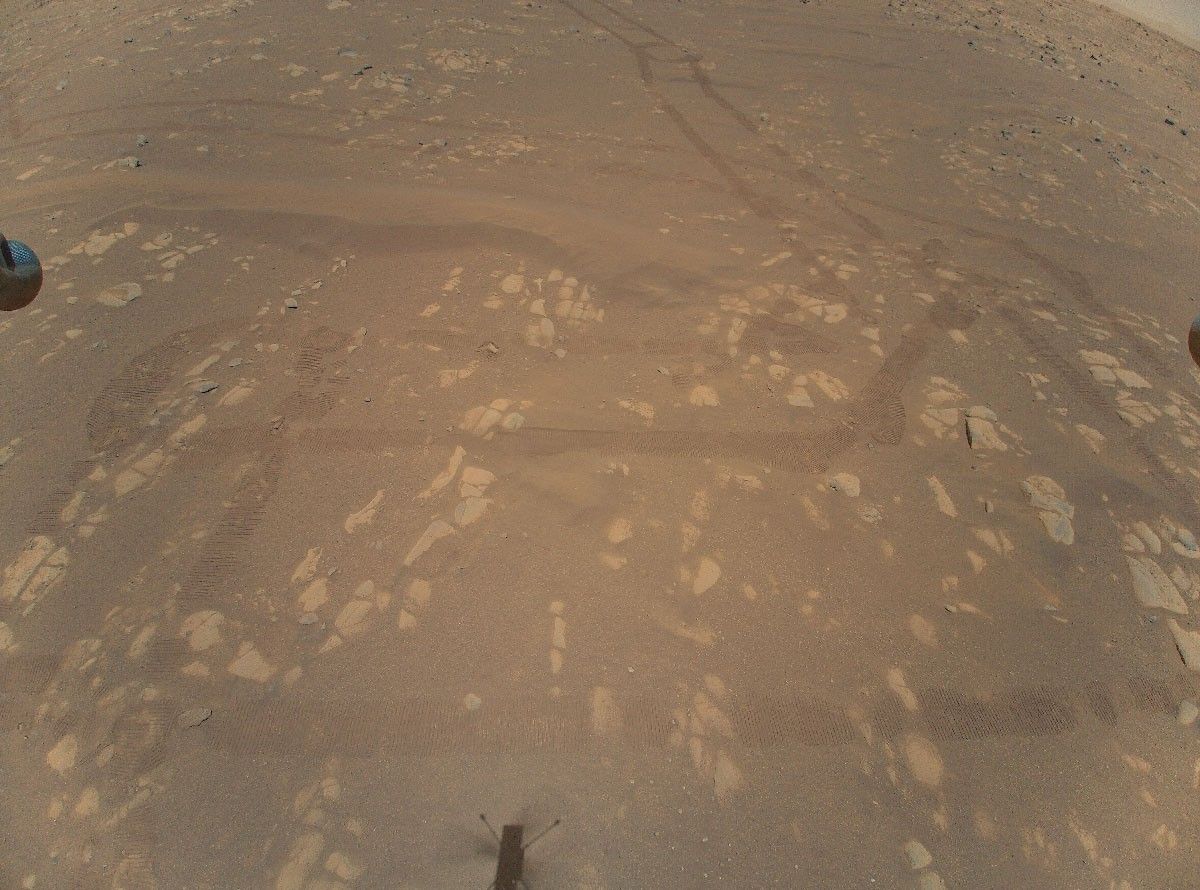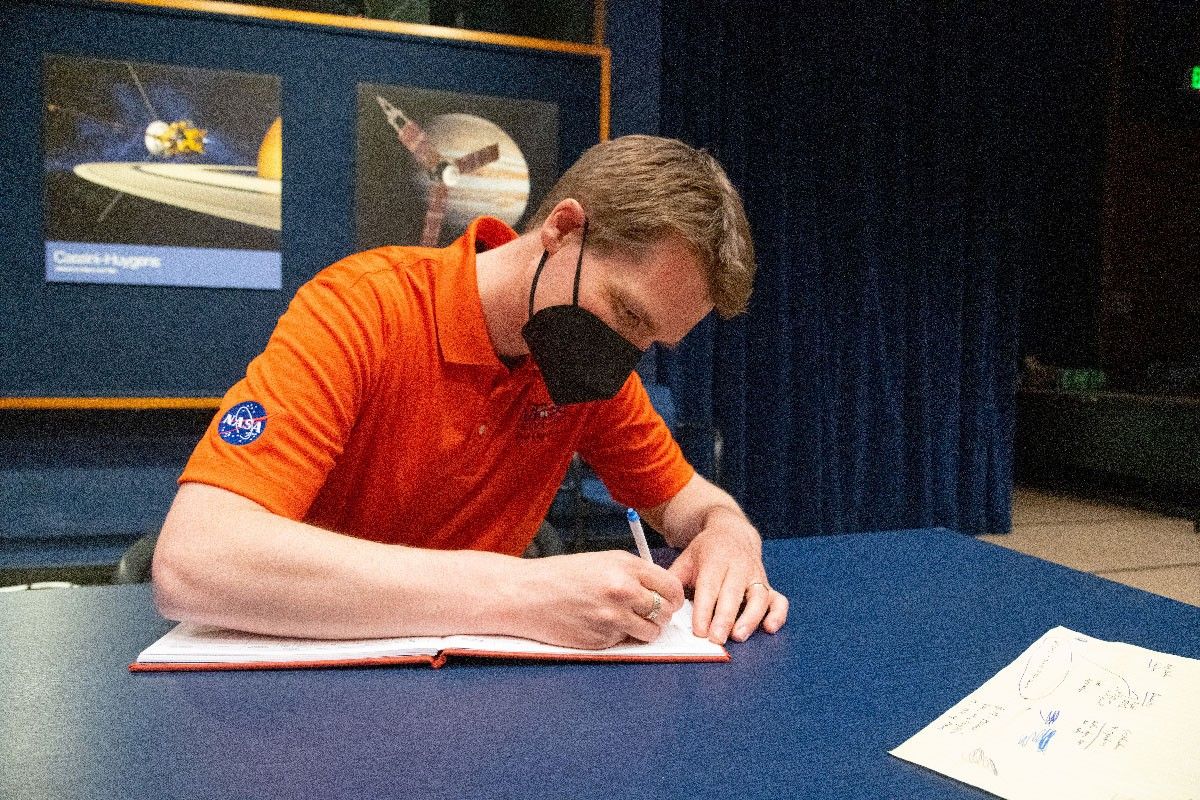
Yesterday I got to write the entry for the second successful experimental flight test from "Wright Brothers Field" in the project's official logbook, which is called "The Nominal Pilot's Logbook for Planets and Moons." Next chance to make an entry is coming up fast: We're targeting our third flight for this Sunday, April 25, with initial datasets and imagery arriving in our control room at NASA's Jet Propulsion Laboratory around 7:16 a.m. PDT (10:16 a.m. EDT).
As many of you know, we carry a piece of the original Wright Flyer aboard our helicopter. Even though we are conducting our flight tests in a tenuous atmosphere over 180 million miles (290 million kilometers) from Earth, we model our methodical approach to experimental flight on the Wright brothers' approach. Our plan from Day One has been to prepare like crazy, fly, analyze the data (like crazy), and then plan for an even bolder test in the next flight.
During the second flight, on April 22, Ingenuity autonomously climbed to 5 meters (16 feet) in height, traveled 2 meters (7 feet) to the east and back, and remained airborne 51.9 seconds. It also made three turns, totaling about 276 degrees.

We're being cautious with each new foray in the skies of Mars as we continue to build confidence in the capabilities of this new exploration platform. For the third flight, we're targeting the same altitude, but we are going to open things up a bit too, increasing our max airspeed from 0.5 meters per second to 2 meters per second (about 4.5 mph) as we head 50 meters (164 feet) north and return to land at Wright Brothers Field. We're planning for a total flight time of about 80 seconds and a total distance of 100 meters (330 feet).
While that number may not seem like a lot, consider that we never moved laterally more than about two-pencil lengths when we flight-tested in the vacuum chamber here on Earth. And while the 4 meters of lateral movement in Flight Two (2 meters out and then 2 meters back) was great, providing lots of terrific data, it was still only 4 meters. As such, Flight Three is a big step, one in which Ingenuity will begin to experience freedom in the sky.
After each of our flights, I have had the privilege of filling out our logbook and capturing the flight highlights — something pilots have been doing since the early days of flying. While I've made logbook entries before as a terrestrial fixed-wing pilot, these are the most unusual entries I have made. They are also the most satisfying, not only because they represent flight on another planet, but because each notation represents a trove of valuable data that our team has spent years preparing to obtain.




























